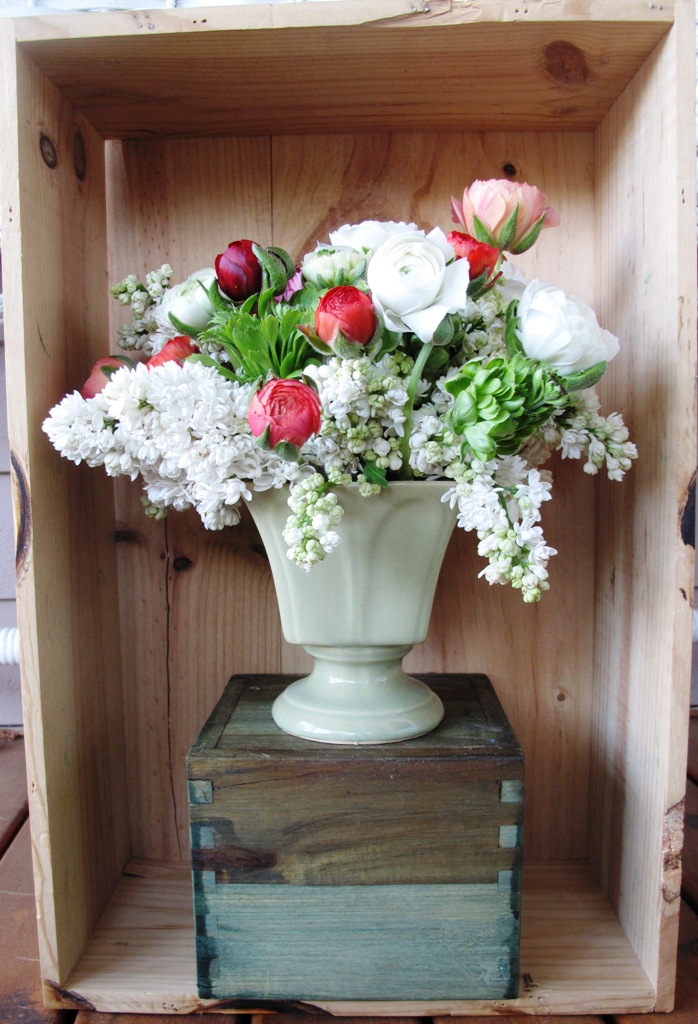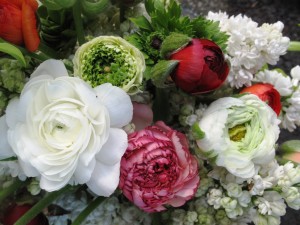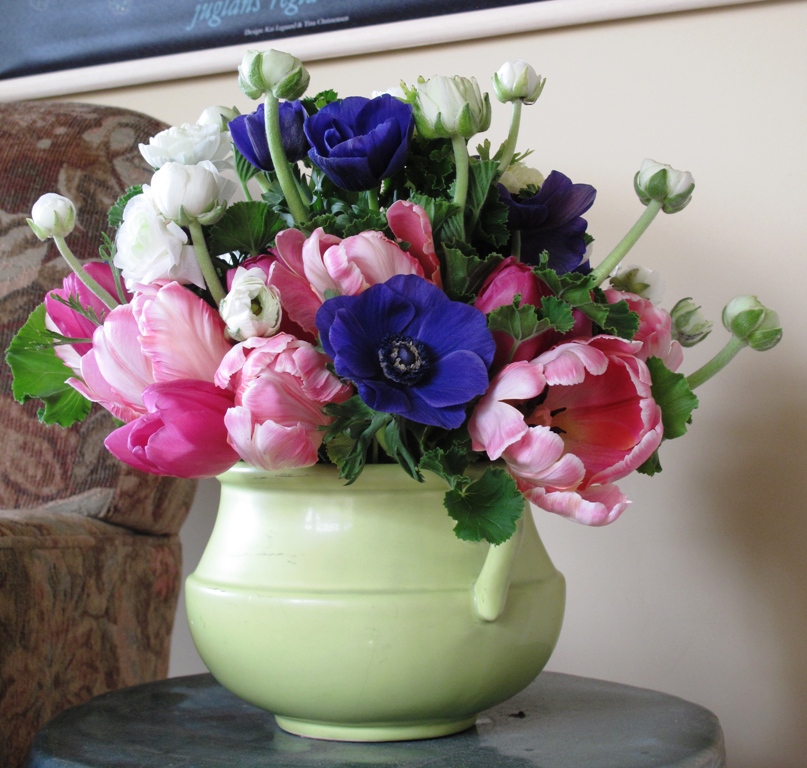Still Life With Flowers

A wine crate serves as a shadowbox for this sweet spring bouquet of white lilacs and ranunculus in a bright pastel palette.
Ingredients:
10 stems lilac (Syringa vulgaris), grown by Oregon Coastal Flowers
12 stems Ranunculus asiaticus, including ‘La Belle’ and ‘Super Green’ varieties, grown by Everyday Flowers
Vase:
5-inch tall x 5-inch wide x 3-inch deep vase (overall height is 5½ inches)
From the Farmer
Extending the vase life: For decades, it’s been the conventional wisdom of florists that woody shrubs, such as lilacs and hydrangeas, benefit from a second cut, a vertical slice up the center of the stem, to increase the surface area that can absorb water. But according to professors Lane Greer and John M. Dole, authors of Woody Cut Stems for Growers and Florists, a research-based reference, the practice “has never been proven to extend vase life.” The best thing you can do is to use clean, sharp pruners and refresh the vase water every day or so.










